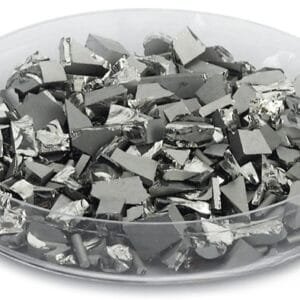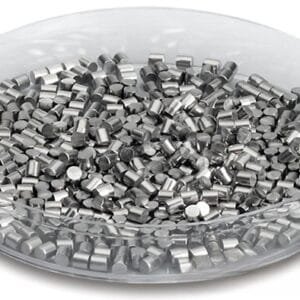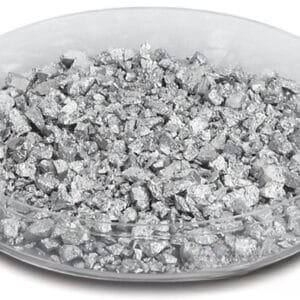Tin Telluride Evaporation Materials Overview
Tin telluride evaporation materials from TFM are high-quality ceramic compounds with the chemical formula SnTe. These materials are essential for high-precision deposition processes, ensuring superior quality in the deposited films. TFM is dedicated to producing evaporation materials with up to 99.9995% purity, leveraging rigorous quality assurance practices to ensure exceptional product reliability.
Specifications of Tin Telluride Evaporation Materials
| Material Type | Tin Telluride |
| Symbol | SnTe |
| Appearance/Color | Gray cubic crystals |
| Melting Point | 790 °C (1,450 °F; 1,060 K) |
| Density | 6.445 g/cm3 |
| Purity | 99.9% ~ 99.99% |
| Shape | Powder/ Granule/ Custom-made |
Applications of Tin Telluride Evaporation Materials
These evaporation materials are crucial for various deposition processes, including semiconductor deposition, chemical vapor deposition (CVD), and physical vapor deposition (PVD). They are primarily used in optics for applications such as wear protection, decorative coatings, and displays.
Packaging and Handling
Our tin telluride evaporation materials are securely packaged in plastic vacuum bags to prevent damage and maintain the product’s quality during storage and transport. Each package includes a Certificate of Analysis (COA) for the raw material.
Contact Us
TFM excels in producing high-purity tin telluride evaporation materials tailored for semiconductors, CVD, PVD, and optical applications. Our integrated approach combines engineering expertise, advanced manufacturing, and comprehensive analytical support to deliver top-tier evaporation materials. Reach out today for more information or to make an inquiry.


 MSDS File
MSDS File



Reviews
There are no reviews yet.